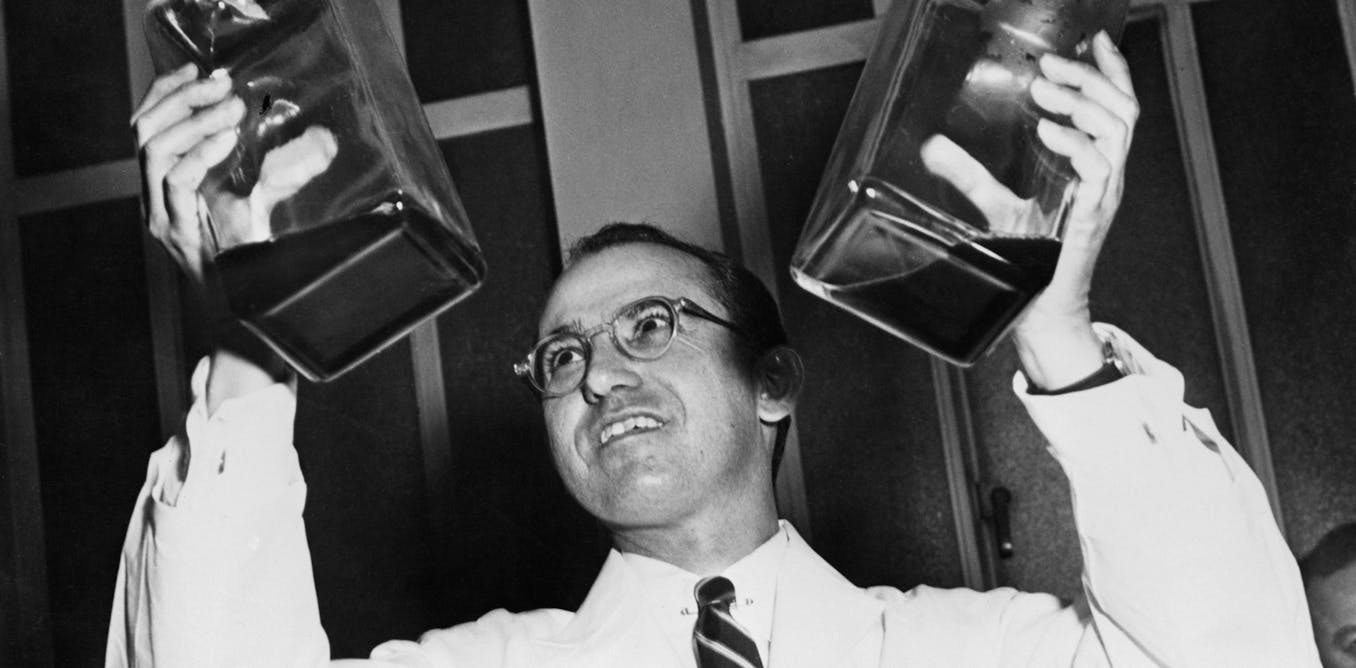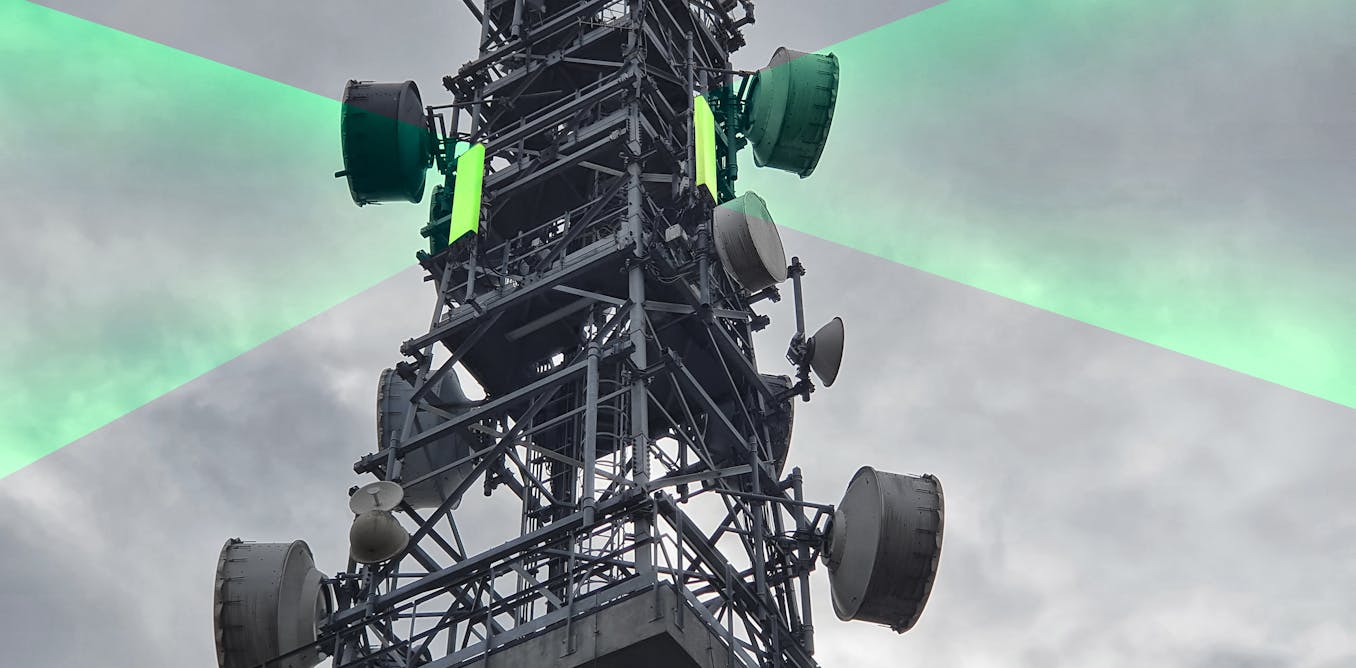On the wall opposite Alvaro Pascual-Leone’s birth house, on a street in Valencia where the now Harvard-based behavioral neurologist spent his childhood, stands a marble plaque that reads: “In this house lived the distinguished researcher Santiago Ramón y Cajal, who began his histological work here.” In that house, the great scientist and Nobel Prize winner began sketching ideas that would later form the basis of his foundational text in the field of histology, “Manual de Histología normal y de técnica micrográfica.” Every time I see my friend Alvaro, I think about that serendipitous encounter.
I associate that connection with a powerful feeling I experienced some time ago at the Green Building on the MIT campus. One afternoon, a kind professor buzzed me into an office on the 12th floor to take a photo of the campus from the north face of that iconic skyscraper designed by I. M. Pei. Crossing a large office to reach the window, I had to maneuver around a beautiful hardwood table. With the photo snapped, I retraced my steps, transfixed on that table. “Do you know why we take such good care of it?” the professor asked with a smile. “Because on that very table,” he explained, “our great Edward Lorenz wrote the nuclear part of the theory of strange attractors and founded his Chaos Theory.” Science wonk that I am, I was paralyzed for an instant by emotion. Seeing my surprise, he explained that they’d left it exactly as Lorenz had it before he died.
Teenage Alvaro’s daily routine for years involved walking past the house of Ramón y Cajal. Could young Alvaro’s daily encounters with Ramón y Cajal’s house have subtly influenced his path? The idea, a sort of strange attractor itself, is intriguing. But who’s to say? I know it’s far-fetched, but the way it resonates with Pascual-Leone’s lifelong dedication to Ramón y Cajal’s work holds a certain charm. With that, let’s dive into a bit of a conversation he and I had earlier this year, which he kindly allowed me to share.
Adolfo Plasencia: Alvaro, your pioneering work on transcranial magnetic stimulation (TMS) — which for our readers is just what it sounds like: using magnets to stimulate the human brain — has opened doors to exciting possibilities in brain research and treatment, particularly for conditions like depression and chronic pain. How has the field evolved since you began your journey?
Alvaro Pascual-Leone: In our now 20-year-old book on TMS, Vincent Walsh and I explicitly argue that sometimes innovations in certain technologies force a conceptual breakthrough. That is, simply, what has happened with transcranial magnetic stimulation from then until now. For a much deeper discussion around the principles and modern applications of TMS, I’d direct readers to this recent discussion.
The most striking thing for me is that when you read Cajal, von Monakow, or Wernicke, you are surprised by the notions they described long ago. But now we can accurately measure what they sensed because we have great specific technologies for that. They were pioneering intuitions that in part had been forgotten, perhaps because they were untested (or not fully testable) hypotheses and by some considered not to be neuroscience. But the fact is that they offered the very foundation of critical insights on brain function we have since rediscovered. Now that we have access to new and evolved technologies, it forces us to reevaluate those theories and allows us to push the theoretical foundations forward.
Adolfo: Your more recent reflections on brain plasticity, particularly how it shapes our perception of time due to the brain’s constant remodeling, caught my attention. Can you elaborate on how this plasticity specifically influences our sense of time?
Alvaro: Time is an aspect, a component, essential to understanding the human brain. It’s often not sufficiently considered because it adds a dimension that makes it more complex. And, as you know, we humans tend to simplify. But I think the philosophy of Heraclitus’s Panta Rei (everything flows) describes precisely what happens in the nervous system. The brain is never the same from one moment to the next throughout life. Never ever. That is the first law.
“My now and your now are at best hundreds of milliseconds out of phase and thus ‘present’ is effectively not a shared reality between the two of us.”
The second law: The brain never goes back. It never undoes the path it has walked. First and foremost, because there is no such path. The poet Antonio Machado was right when he wrote that “there is no path, the path is made by walking.” There is no mechanism to un-beat the beaten egg, so to speak. Once something is learned or experienced, it can’t be erased. What does exist is the possibility of making a change with which you functionally “go back” to a state like the one you had before. The outcome might be the same, but the brain uses a different pathway to get there. It is a change that makes the representation of what appears functionally the same, in reality, turn out to be different. That is, you cannot redo or retake the trace you had, but you can make a new trace. This principle, where the outcome remains similar but the underlying process changes, is a hallmark of the brain’s remarkable plasticity.
The third law — the third reality — is that time in the brain is a very particular thing because “now” does not really exist. I may be saying “now,” but I’ve already thought about it and, in the best case, it has taken me 30 milliseconds to finish that processing and send the message to my larynx to come out. So, I thought it and then I said it with a time lag. And you heard it and it has taken you at least another 30 milliseconds to integrate it and process it, and then another 30 milliseconds to decode it. So mine is not the “now” that I am telling you, but that of 30 milliseconds ago. You get the idea. My now and your now are at best hundreds of milliseconds out of phase and thus “present” is effectively not a shared reality between the two of us.
This very curious reality, according to which we think we are in the present, but actually that present does not exist in a neurobiological sense, is explained very well by Bill Bryson in his book “The Body: A Guide for Occupants.” He illustrates well this paradox that time is essential while at the same time illusory and elusive.
Adolfo: Apropos of all this, the engineer and neuroscientist José M. Carmena, in my collection of discussions with scientists (in which you also participate), argues that the brain creates consciousness, which is an illusion. However, according to him, it is a fictitious illusion. Philosopher Javier Echeverría applauds this assertion but warns him that this statement will get him into trouble with phenomenologists and Kantians. They will accept, according to Echeverría, that consciousness is an illusion, but they will not accept that consciousness is a fictitious illusion fabricated by the brain itself.
Alvaro: I agree with José. I think the brain works by creating hypotheses about what it is going to find and then it contrasts those hypotheses with what it actually finds. It is not a receptive chamber of information. It is an active projection that it compares with the reality it encounters.
Adolfo: You began a recent lecture by saying, “When I started this lecture, you had your brain in one way, and when I finish it, and you have listened to me, you will have it in another way.” In other words, we have to understand the brain not as something static but as something dynamic in a process of continuous change.
Alvaro: Yes, that’s right. Everything we do, think, and experience changes our brain.
Adolfo: Let me now introduce an adjacent topic. Brain technologies, or so-called neurotechnologies, are regularly used to manage or treat persistent diseases like epilepsy, depression, Alzheimer’s, and Parkinson’s. You yourself use these technologies in your lab. But as with any powerful tool, there’s always the risk of bad actors misusing it. A few years ago Politico published a chilling article that captured the emerging fear of brain privacy invasion. The headline: “Machines can read your brain. There’s little you can do to stop them.” In the face of all this, a growing movement is emerging that brings together neuroscientists, philosophers, lawyers, human rights defenders, and policymakers who are rushing to try to protect that last frontier of privacy.
But technologies are evolving at an enormous speed. In December, a group of Australian researchers demonstrated a “mind-reading” system called BrainGPT. Essentially they connect a multitasking EEG encoder to an LLM capable of decoding coherent and readable sentences from EEG signals. BrainGPT can, according to its creators, convert thoughts (recorded with a non-invasive electrode helmet) into words that are displayed on a screen. Alvaro, I need a reality check. What can actually be read today in the brain, and to what extent? Are there ways to protect the privacy of the brain from this, and how can we protect ourselves from the invasiveness of these machines?
Alvaro: The reality is that the ability to read the brain and influence activity is already here. It’s no longer only in the realm of science fiction. Now, the question is, what exactly can we access and manipulate in the brain? Consider this example: If I instruct you to move a hand, I can tell if you are preparing to move, say, your right hand. I can even administer a precise “nudge” to your brain and make you move your right hand faster. And you would then claim, and fully believe, that you moved it yourself. However, I know that, in fact, it was me who moved it for you. I can even force you to move your left hand — which you were not going to move — and lead you to rationalize why you changed your mind when in fact, our intervention led to that action you perceive as your choice. We have done this experiment in our laboratory.
“I can even force you to move your left hand — which you were not going to move — and lead you to rationalize why you changed your mind.”
In humans, we can modify brain activity by reading and writing in the brain, so to speak, though we can affect only very simple things right now. In animals, we can do much more complex things because we have much more precise control of the neurons and their timing. But the capacity for that modulation of smaller circuits progressively down to individual neurons in humans is going to come, including much more selective modification with optogenetic alternatives — that is, using light to control the activity of neurons. Therefore, something that we should be very clear about as a society and as human beings is what regulations and criteria we should develop so that their use is appropriate — and beneficial — for the individual and not just a source of profit or power. I welcome this movement in favor of neuroethics and its application to neurological techniques because I think it is crucial.
Adolfo: Last year, I attended an open session organized in Valencia by the Consell Valenciá de Cultura. You shared the stage with your colleague Rafael Yuste, director of the NeuroTechnology Center (NTC) at Columbia University and co-founder of The NeuroRights Foundation. At the meeting, the Declaration on Neurorights of Valencia was unveiled. This Declaration asserts that neurorights must be included in the universal list of human rights. Why do you think neurorights are important and necessary for our present and immediate future life?
Alvaro: I think Rafa Yuste has articulated the challenge, the problem, and the need very well. I think we already have technology that allows us to read and write in the brain, extract information from our brain and manage it in a way that could compromise, at least potentially, the independence, privacy, and agency of each of us.
Adolfo: You refer to the ability to make decisions and the choices that make up and allow free will, right?
Alvaro: Exactly. That’s what I mean by agency. The assertive ability, in the first place, to do and decide for oneself. Anything that interferes with that poses a potential risk to the very essence of human rights. In other words, a new list of human rights would have to be developed and expanded by Neurorights. They need to be expanded, as the current ones fall short and do not sufficiently protect against the possibility of information extraction, manipulation, and personal control to which today’s neurotechnology can already give rise. I have joined in because I believe they are a necessary extension. Neurorights will be fundamental in the societies of the future.
Adolfo Plasencia is a science writer and the author of “Is the Universe a Hologram? Scientists Answer the Most Provocative Questions.”
This article Mind-reading and neuroplasticity: In conversation with neurologist Alvaro Pascual-Leone is featured on Big Think.

The post “Mind-reading and neuroplasticity: In conversation with neurologist Alvaro Pascual-Leone” by Adolfo Plasencia was published on 07/28/2024 by bigthink.com





































Leave a Reply